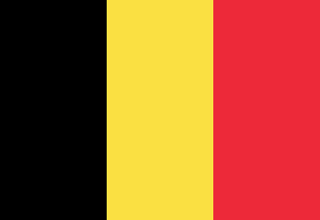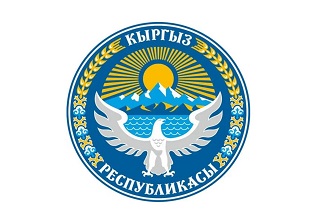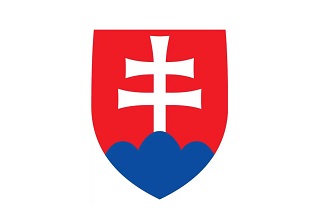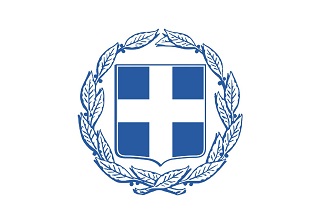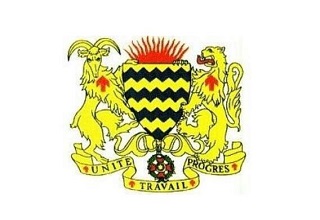Regarding the Inspection and Quarantine Requirements for the Importation of Serbia Apple
1. Inspection and quarantine basis
(1) "The Law of the People's Republic of China";
(2) The "Law of the People's Republic of China in and out of the country" and the implementation regulations;
(3) "Food Safety Law of the People's Republic of China" and implementation regulations;
(4) "Measures for the Supervision and Supervision and Supervision and Quarantine of Entry Fruits";
(5) The General Administration of Customs of the People's Republic of China and the Agricultural, Forestry, and Water Management Department of the Republic of Serbia on the Protocol on the Requirement of the Serbia Apple Evolution of Apple ".
2. Allow the name of entering the country
Fresh apples (hereinafter referred to as Apple), scientific name Malus Domestica, English name Apple.
3. The place where allowed
Serbia Apple Production Area.
4. Approved orchard, packaging plant and quarantine treatment facilities
The transmission of apple orchards, packaging factories and cold treatment facilities must be reviewed and recorded by the Ministry of Agriculture, Forestry and Water Management (hereinafter referred to as Serbia) of the Republic of Serbia, and approved by the General Administration of Customs of the People's Republic of China (hereinafter referred to as China). Registration information includes names, addresses and registration numbers. The registration list should be provided by the Chinese side before the annual export season. After the Chinese side is approved and approved, China will announce the registration list on the website of the General Administration of Customs.
5. Chinese -based quarantine harmful creatures
1. Mediterranean CERATITIS CAPITATA
2. Apple moth Cydia Pomoneella
3. Apple mosquito Dasineura Mali
4. Dysaphis Plantaginea in front of the car
5. Peach Baiyuan Shield EpidiaSpis Leperii
6. Eriosoma Lanigerum
7. Permental HopLocampa Testudinea
8. Wing-winged small roll moth is a Hedya Nubifrana
9. Mengny Night Moth is a kind of Orthosia Cerasi
10. Peach Xiao -winged large aphid/Peach Big Black Aphid Pterochloroides Persicae
11. Pear Thrus TAENIOTHRIPS Inconsequens
12. US -Australian nuclear fruit brown rot bacteria Monilinia Fructicola
13. Lilac Fosterium PHYTOPHTHORA SYRINGAE
14. Apple Black Star Venturia Inaequalis
15. Erwinia Amylovora
16. Clove fake monolithium clove -deformity species Pseudomonas Syringae PV. Syringae
6. Before export management
(1) Orchard management.
1. The orchards should establish a sound quality management system and traceability system under the supervision of Serbia, and implement a good agricultural operation specification (GAP) to maintain the hygiene conditions of the orchard, such as the surrounding sources of pollution that affects the production of fruits, timely cleaning down fruit, rotten fruit, etc.; And implement comprehensive management of harmful biological (IPM), including regular control measures such as harmful biological monitoring, physics, chemistry or biological control, and agricultural operations.
2. Segees shall, in accordance with the requirements of international plant quarantine measures No. 6 (ISPM 6), are required to formulate and implement orchard monitoring of orchards. If harmful creatures or corresponding symptoms are found in monitoring, comprehensive management measures including chemistry, physical or biological control are adopted. The monitoring and prevention of harmful creatures in the orchard shall be implemented under the guidance of professional and technical personnel in Serbia. Technicians should receive training from Serbia or its authorized agency.
3. The transit orchard must retain harmful biological monitoring and prevention records, and should be provided by the Chinese side. The prevention records should include information such as chemical pharmaceuticals, effective ingredients, dosage and time such as the growth season.
4. The landing must not be used for exporting to China. The Series should ensure that at least 20 days before the fruit harvest, it should check the orchard, focusing on checking whether the quarantine and harmful biological monitoring and prevention of the quarantine, orchards, and the maintenance of the field sanitary conditions are maintained. If it is found that the quarantine is harmful creatures that China pays attention to, the sample should be sent to the official laboratory for identification, and control measures should be taken immediately. For the orchards that cannot meet the conditions of apple transit plant quarantine, the export qualifications should be suspended this season.
5. For the Mediterranean solid flies, the Serbia should establish a Mediterranean solid flies monitoring system. The transmission orchard must use the sex pheromone Trimedlure as the bait period from the flowering period to the harvest period, and use the Jackson catcher to monitor. The density of the capture device is 1 hectares per 10 hectares, and the orchards with a area of less than 10 hectares must be installed at least 3 traps and check every two weeks. Once real flies are monitored, effective prevention and control must be performed.
6. For Lihuo epidemic, the infusion apple should come from the non -epidemic area of Lihuo disease. Non -epidemic areas shall be established and maintained in accordance with the requirements of international plant quarantine measures No. 10 (ISPM 10). At the request of the Chinese side, Sye Fang should provide China in time to provide relevant information about the maintenance of non -epidemic -produced areas. Segee must organize the monitoring of Lihuo disease in the Apple production area across the country, and each region is monitored at least 3 times a year. The Serbia or its authorized unit is responsible for monitoring the disease of the Lugoya pear fire. It is investigated at least 3 times a year, that is, it is carried out before the new bud germination, 30-40 days after flowering, and before harvesting. If the pear fire disease is monitored in the orchard season before the export season, a buffer zone should be established in a range of 1,000 meters outside the non -epidemic production area. At the request of China, Sye Fang should timely provide China to provide monitoring related information. Regardless of whether the pear fire disease is monitored in the non -epidemic area or the buffer area, the Series should suspend the qualifications of the non -epidemic area and immediately notify the Chinese side. The Serbia eliminates the epidemic and is recovered by the non -epidemic area after being recognized by the Chinese side.
7. For the US -Australian nuclear fruit brown rot bacteria, the transmission of Apple should come from the US -Australian nuclear fruit brown rot bacteria non -epidemic zone. Non -epidemic areas shall be established and maintained in accordance with the requirements of international plant quarantine measures No. 10 (ISPM 10). At the request of the Chinese side, Sye Fang should provide China in time to provide relevant information about the maintenance of non -epidemic -produced areas. Under the supervision of Serbia and the guidance of technical personnel, the Urban Loan Orchards should carry out the monitoring of the US -Australian nuclear fruit brown rot bacteria under the guidance of the technical personnel. It is monitored through visual inspection, sampling and appraisal, and investigated every two weeks. It should be required that the Series should provide China with investigation reports or management records about the harmful creatures. If the US -Australian nuclear fruit brown rot is monitored in a non -epidemic -producing area, the Series will suspend the eligibility of the non -epidemic area and immediately notify the Chinese side. The Serbia eliminates the epidemic and is recovered by the non -epidemic area after being recognized by the Chinese side.
8. In response to the apple moth, the loss of the orchard must be monitored by the apple moth in the orchard under the supervision of the Serbia and the guidance of the plant protection technicians. The density of the capture device is 1 per hectare, and at least 3 catcher hangers less than 3 hectares. Replace the core once a month, and check and record the capture of the capture every two weeks. If you find that there are 3 or more apple moths in the arrest device, it is necessary to immediately prevent and control it. In the orchards with incomplete prevention and control, the Serbia will suspend the qualifications of the orchard and immediately notify the Chinese side. It should be required that the Series should provide China with investigation reports or management records about the harmful creatures.
9. In response to Pingye bee, the orchards should monitor the bee bee under the guidance of Serbia's supervision and technical personnel, and take non -chemical measures and chemical measures for effective prevention and control. Set a white sticky catcher and visual inspection of harmful creatures in the orchard. The density of the adhesive catcher is 1 per hectare, and the orchards with an area of less than 3 hectares must be installed at least 3 adhesive captures, and the traps are checked once every two weeks. In autumn, the fruit garden must be cleaned, collected, and destroyed in infected fruits. Once Pingye bee is monitored, pesticides recognized by China should be used in a timely manner for prevention and treatment. In the orchards with incomplete prevention and control, the party should suspend the qualifications of the orchard and immediately notify the Chinese side. It should be required that the Series should provide China with investigation reports or management records about the harmful creatures.
10. Aiming at the quarantine -harmful creatures such as roundtail aphids, peach -white shields, and cloves, and other Chinese on the front of the car, the loses orchards should be monitored under the supervision and guidance of the Symbismist technicians. The harmful biological monitoring from the flowering period to the harvest period, monitoring at least once every 2 weeks, focusing on checking whether the fruit, stems, branches, and leaves occur. If harmful creatures or corresponding symptoms are found in monitoring, biological, physical or chemical methods are required to be used in a timely manner. In the orchards with incomplete prevention and control, the Serbia will suspend the qualifications of the orchard and immediately notify the Chinese side. It should be required that the Series should provide China with investigation reports or management records about the harmful creatures.
(2) Packaging plant management.
1. The process of transmission, packaging, storage, and transportation of the transmission of apples must be carried out under the supervision of quarantine supervision of the Cecilia or its authorized officials. Packaging and refrigerating facilities need to maintain a good sanitary state, and need to have conditions to prevent harmful creatures (such as insect -proof nets).
2. During the packaging process, apples must be washed, brushed, sterilized, picking, and grading to eliminate defective fruits to ensure that they do not bring insects, mites, rotten fruits and branches, leaves and soils.
3. After the packaging is completed, the technicians of the packaging factory should check the 600 fruits of each batch, and select 60 fruit with suspicious symptoms for cutting. If the quarantine is found to be harmful to the quarantine, the batch of fruits will not be exported to China. If the pear fire disease or the US -Australian nuclear fruit brown rot bacteria should be discovered, the Series should also suspend the qualifications of the relevant non -epidemic area and immediately notify the Chinese side. The Serbia eliminates the epidemic and is recovered by the non -epidemic area after being recognized by the Chinese side.
4. The packaged Laoshia apple should be immediately entered and stored separately to avoid being infected by harmful creatures.
(3) Packaging requirements.
1. The packaging materials of the transfusion apple should be clean and unused, which meets the requirements of Chinese plant quarantine and hygiene. If the wooden packaging is used, it must meet the requirements of the international plant quarantine measures No. 15 (ISPM 15).
2. Each packaging box must indicate the name of the fruit name, the country, the place of production, the name of the orchard or its registration number, the name of the packaging factory or its registration number on each packaging.
3. Each packaging box and tray must be marked with Chinese or English "to the People's Republic of China" or "Exported to the People's Republic of China".
4. The container installed and transported Hua Apple must be checked during boxing to ensure that it has good hygiene conditions and save relevant records for check -in.
(4) Quarantine treatment requirements.
1. All losses in China need to take cold treatment measures for the Mediterranean Fly. Cold treatment indicators are as follows:
1.11 °C or below (pulp temperature), continuously handle 14 days or more; or
1.67 °C or below (pulp temperature), continuously handle 16 days or more; or
2.22 °C or below (pulp temperature), continuously processed for 18 days or more.
2. Cold treatment needs to be carried out in accordance with the supervision of the Serbian or its authorized personnel, according to the cold treatment operation program (see Annex 1) before the exit (see Annex 1) or the cold treatment operation program (see Annex 2) during transportation.
(5) Inspection and quarantine before export.
1. Within two years after the trading development, the Serbia or its authorized personnel shall sample the sample inspection of each batch of apple apples in each batch of 2%per batch of goods, with a minimum sample of 1,200 fruits. At the same time The suspicious fruits found during the inspection process were checked. If there is no plant quarantine problem in two years, the number of samples can be reduced to 1%, but not less than 600 fruits.
2. If it is discovered that the pear fire disease or the US -Australian nuclear fruit brown rot bacteria, any kind of harmful biological biological body in the United States should suspend the eligibility of the relevant non -epidemic -producing area and immediately notify the Chinese side. When the Serbia eliminates the epidemic and is recognized by the Chinese side, the status of the relevant non -epidemic area can be restored.
3. If other harmful biological living bodies are found to be found, the batch of goods shall not export to China. The Series should find out the reason and take improvement measures. At the same time, saving the seizure record should be provided to the Chinese side.
(6) Plant quarantine certificate requirements.
1. Those who have qualified for quarantine, Seyang issued a plant quarantine certificate to indicate the name or registration number of the orchard and packaging factory, and indicate in the additional statement: "This consignment complies with requirements spiecified in the propocol of phytosanitary Requirem ENTS for Export of Fresh Apples from Serbia to China, and is free from the quarantine pests of content to China. "
2. For apples that are cooled before exporting, information such as the processing temperature, duration and processing facility name or code should be indicated on the plant quarantine certificate. For cold treatment during transportation, the "Cold Treatment in Transit" should be marked on the plant quarantine certificate, and information such as the treatment temperature, duration, container, and sealing number are stated.
3. Serbia should provide the Chinese side quarantine certificate sample to the Chinese side before the start of the trade in order to confirm and record.
7. Inbound quarantine and unqualified treatment
When the Loan Apple arrived in China to enter the port, the Chinese customs implemented quarantine in accordance with the following requirements.
(1) Certificate and logo verification.
1. Check whether the Loan Apple has obtained the "Entry and Plant Quarantine License".
2. Check whether the plant quarantine certificate meets the provisions of Article 6 (6) of this announcement.
3. Check whether the identification on the packaging box and the tray meets the provisions of Article 6 (3) of this announcement.
4. For the cargo that implements cold treatment before the exit, there must also be a report form and a citizen of the cold treatment results signed and confirmed by the Saifang; for the cargo for cold treatment during the transportation, there must be a cold treatment report, the fruit temperature probe correction record, wait.
(2) Entry inspection and quarantine.
1. The transit Apple should allow the port of imported fruits to enter the country.
2. According to relevant laws, administrative regulations, rules and regulations, the inspection and quarantine of the infusal apple is performed.
(3) Unqualified processing.
1. If it is found that the unruly orchard and packaging factories are found, the batch of goods will not be allowed to enter the country.
2. If the cold treatment is identified invalid, the batch of goods will be treated with shore -cooled treatment (can still be performed in the container), return, and destroy measures.
3. If the quarantine -harmful creature or Serbia's new quarantine is found in the lively quarantine, or soil, plant residue, etc., the batch of goods will be returned, destroyed or quarantine.
4. If it is found that it does not meet the national standard of food safety, the batch of goods will be returned or destroyed.
5. If the above does not meet the requirements, China will immediately notify the Serbia and suspend the import of apples of related orchards, packaging plants or cold treatment facilities as depending on the situation. If a non -epidemic area from the pear fire disease or the US -Australian nuclear fruit brown rot bacteria, immediately cancel the status of the relevant non -epidemic area. The Segee should find out the reasons that do not meet and take improvement measures to prevent similar situations from happening again. China will decide whether to cancel the suspension measures based on the result of the rectification of the Serbia.
This is hereby announced.
General Administration of Customs, P.R. China
October 26, 2023
Cold treatment operation program before exporting
1. Cold treatment facility type
(1) Cold treatment before export can only be performed in the refrigerated room approved by the Cecilia and China.
(2) Ceramics or authorized officials must ensure that the refrigerator used by exporters meets appropriate standards and has a refrigeration equipment that can achieve and maintain the required temperature.
(3) Cyprin or its authorized officials must retain the refrigerated room registration documents approved by the refrigerator for the cold treatment before the export of the fruit. This file should contain the following content:
1. The location and construction plan of all facilities, including the detailed contact information of the owner or operator;
2. The size and capacity of the facility;
3. The type of insulation of walls, flooring and ceiling;
4. The brand, style, type, and capacity of the refrigeration compressor, evaporator and air circulation system;
5. The temperature range of the device, defrosting cycle control and any integrated temperature recorded equipment specifications and detailed information.
(4) Before the fruit export season begins, the Series must submit to the Chinese side to the current registered cold treatment facility list.
2. Recorder type
The segue must ensure that the probe and temperature recorder are full of conditions:
(1) The probe temperature should be from -3.0 °C to+3.0 °C, accurate to ± 0.15 °C;
(2) The probe that can accommodate the number of required;
(3) Data that can record and store the processing process until the Cymbaret is inspected;
(4) It can record at least once every hour per hour and the accuracy of the required for probe temperature;
(5) Can print output identification of each probe, time and temperature, and indicate the recorder model and cold treatment facility identification number.
3. Temperature probe correction
Correcting the standard thermometer approved by the Segee must be performed in a mixture of broken ice and distilled water:
(1) The probe exceeding 0 °C ± 0.3 °C must be replaced with other probes that meet the standard;
(2) When the processing is completed, the Cymbian or its authorized officials must use the correction method mentioned to verify the correction of the fruit temperature probe.
4. The temperature probe to insert
(1) The fruits of the tray must be pre-cooled under the supervision of the Serbian or its authorized officials and loaded them in the cold treatment room.
(2) Use at least 2 probes to measure room temperature at the air outlet and return air. At least the following 3 probes measure the fruit temperature:
1. A center in the middle of the cold treatment room;
2. A corner of the top layer of the fruits in the middle of the cold treatment room;
3. One is located at the air in the middle of the fruit.
(3) The insertion of the probe and the connection to the recorder must be completed under the supervision and guidance of the Cyclide or its authorized officials.
(4) The recorder can start at any time. However, only when all fruit temperature probes reach the specified temperature, the processing time can be started.
(5) When only the minimum number of probes are used, if any probe exceeds 4 hours in a row, the processing is invalid and must start again.
5. Review results
(1) If the processing records indicate that the processing parameters have met the requirements, the Series or its authorized officials can authorize to end the processing and correct the probe; Finish.
(2) The probe must be corrected before the fruit is removed from the container.
6. Processing results confirmation
(1) The temperature records of the print output can indicate that the required cold treatment has been completed.
(2) Serbia or its authorized officials must save the above records and statistical values before confirming the process of processing. At the request of China, the above records are provided for review.
(3) If the processing fails to meet the required cold treatment requirements, one of the following conditions can be re -connected to the recorder and continue to handle:
1. The conditions requested by Article 6 of the Sye Fang or its authorized officials are still met;
2. The time interval between the stop and the re -start time is within 24 hours.
In the above two cases, the data can be collected from the recorder again.
7. Loaded into a container
(1) The container before loading must be checked by the Celestial Fang or its authorized officials to ensure that there is no harmful creature and cover it at the entrance to prevent pests from entering.
(2) Fruits must be packed in buildings with insect -proof measures; or insect -proof materials are connected between the exit of the refrigerator and the inlet of the container.
8. The sealing of the container
(1) The container loaded with the fruits must be sealed with a encoded seal, and its sealing number needs to be indicated on the plant quarantine certificate.
(2) The sealing can only be opened by the Chinese Customs in the port.
9. Storage of fruits that are not immediately loaded
If the processed fruits are not packed immediately, it can be temporarily stored under the supervision of the Cecilia or its authorized officials.
(1) If there is a cold treatment room in the fruits, the door must be closed in the cold treatment room;
(2) If the fruit needs to be transferred to other storage rooms, the transfer method must be approved by the storage side, and other fruits shall not be stored in the storage room;
(3) Fruits must be packed in accordance with Article 7 of the seventh in accordance with the supervision of the segue or its authorized officials.
10. Plant quarantine certificate
(1) The temperature, duration, cold treatment facility name or registration number of the cold treatment before export must be indicated in the plant quarantine certificate.
(2) When the fruit enters the country, it is necessary to provide the Chinese Customs with a plant quarantine certificate and a report on the cold treatment results (with a cold treatment temperature records and the recording of fruit temperature probe correction).
Cold treatment operation procedures during transportation
1. Container type
The container must be a transport container for its own (overall) refrigeration, and has a refrigeration equipment that can achieve and maintain the required temperature.
2. Recorder type
Serbia or its authorized officials must ensure that the probe and temperature recorder are full of conditions:
(1) The probe temperature should be from -3.0 °C to+3.0 °C, accurate to ± 0.15 °C;
(2) There are sufficient number of probes;
(3) Data that can record and store the processing process;
(4) It can record at least once every hour per hour and the accuracy of the required for probe temperature;
(5) The printed temperature record must correspond to the corresponding time and temperature of each probe, and indicate the recorder model and container number.
3. Temperature probe correction
(1) Correction must be performed in a standard thermometer approved by the Serbia or its authorized officials in the broken ice and distilled water mixture.
(2) The probe exceeding 0 °C ± 0.3 °C must be replaced.
(3) A "fruit temperature probe correction record" must be issued to each container or its authorized officials, which must be attached to the plant quarantine certificate of the casual goods.
(4) When the fruit is delivered to the port, the Chinese customs will correct the fruit temperature probe.
4. The temperature probe to insert
(1) The fruits of the tray must be loaded into the container under the supervision of the Serbian or its authorized officials. The tray and box should be loose to ensure that there is sufficient air gap.
(2) Each container must be inserted at least 3 fruit temperature probes and 2 space temperature probes. The specific location is:
1.1 fruit temperature probe is inserted in the center of the first row of the fruit installed in the container;
2.2 Fruit temperature probe is inserted in the center of 1.5 meters (40 feet containers) or 1 meter (20 -foot container) from the container door, and in the place where the fruit height is half;
3.3 Fruit temperature probe is inserted on the left side of 1.5 meters (40 feet containers) or 1 meter (20 -foot container) from the container door, and at half of the height of the fruit;
4. The 2 space temperature probes are inserted at the entrance and return air outlets of the container.
(3) All probes must be inserted under the supervision and guidance of the Serbian or its authorized officials.
(4) The fruits before the box need to be cold to 4 °C or below the pulp in the refrigerator.
5. Container sealing
(1) The container loaded with the fruits must be sealed with a encoded seal.
(2) The sealing can only be opened by the Chinese Customs in the port.
6. Processing results verification
(1) The probe must be corrected before the fruit is removed from the container.
(2) If the fruit temperature probe shows the technical indicators, the probe correction and the position of the insertion meet the requirements of Article 3 and 4, the treatment should be considered valid.
7. Temperature records and confirmation
(1) Cold treatment during transportation can start before the fruit left Serbia Port, and ends before or after reaching China's first port.
(2) Records can be started at any time, but only when all fruit temperature probes reach the specified temperature, the processing time starts.
(3) The cold treatment temperature record downloaded by the shipping company must be submitted to the Chinese customs. If the cold treatment is completed before the ship arrives at the port, the cold treatment records downloaded on the ship can be transmitted to the Chinese customs on the way.
(4) Chinese Customs will review whether the cold treatment record meets the relevant processing requirements, and determine whether the cold treatment is valid according to the results of the probe correction.
8. Plant quarantine certificate
(1) Cold treatment temperature and duration, container number, and sealing numbers must be indicated in the plant quarantine certificate.
(2) When entering the country, it is necessary to provide Chinese customs with plant quarantine certificates, cold treatment reports (with cold treatment temperature records), and fruit temperature probe correction records.
